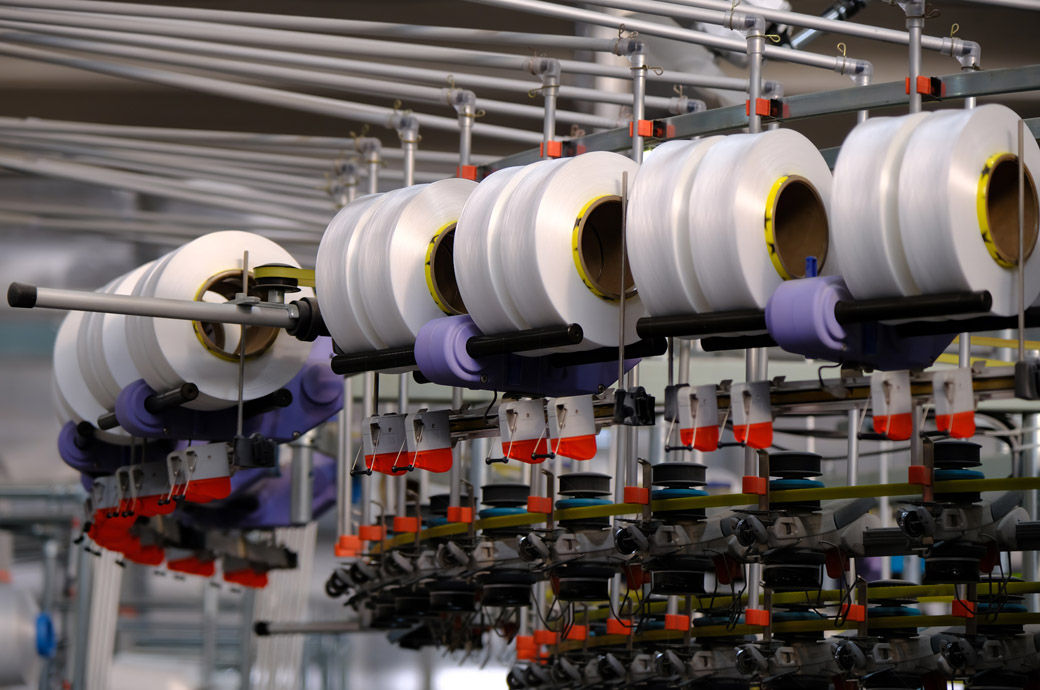
Industry leaders and experts are urging the Indian government to introduce transformative budgetary reforms to boost the sector. Key recommendations include reducing import duties, simplifying complex regulations, and fostering an environment that promotes innovation and global competitiveness. By addressing these pressing issues, India could emerge as the preferred choice for international buyers navigating current uncertainties.
Modification or repeal of QCO
One of the industry’s significant challenges lies in the high cost of raw materials. Indian raw material prices remain substantially higher than global benchmarks. Unlike competitors such as Bangladesh and Vietnam, which benefit from unrestricted access to raw materials, India’s imposition of Quality Control Orders (QCO) on man-made fibres (MMF) and yarn has restricted imports. This has led to shortages of specialised fibres and yarns, inflating domestic prices and undermining the sector’s competitiveness. The budget may consider easing these restrictions to boost exports and enhance domestic consumption.
Increase in export subsidies
Amid rising freight costs and higher raw material prices compared to global competitors, industry stakeholders are calling for increased export subsidies to enhance competitiveness. Key demands include:
These measures would enable India to capitalise on opportunities arising from the global challenges faced by other Asian exporters, positioning the country as a more competitive player in the international market.
Continuation of RoDTEP and RoSCTL schemes
The RoDTEP (Remission of Duties and Taxes on Export Products) scheme, which ended on December 31, 2024, was crucial for textile exporters in India as it refunded duties, taxes, and levies not covered under GST. Industry experts are hopeful for its continuation, as it significantly supported India’s fragmented textile industry. The scheme boosted exports by remitting taxes at various levels and expanding its scope to include polyester items under HS Code 57.
Meanwhile, the RoSCTL (Rebate of State and Central Levies and Taxes) scheme aided textile companies, particularly those in apparel and made-ups, by removing taxes and levies that impacted smaller units. This made Indian apparel and made-ups more cost-competitive globally. The rebate includes VAT on fuel, captive power, and taxes on farm inputs like pesticides and fertilisers. Extending these schemes through 2026 would provide textile exporters with a valuable opportunity to boost production and exports.
Skill development for Indian textile makers and increased employment in 2025
The Union Budget 2024-25 placed a strong emphasis on MSMEs, particularly in skill development. An additional 1,000 Industrial Training Institutes (ITIs) have been proposed, targeting labour-intensive sectors such as textiles and apparel. Enhanced skilling initiatives for textile workers could provide India with a competitive edge over automation-heavy economies like China and Vietnam.
The SAMARTH Scheme has played a pivotal role in upskilling textile workers, and the upcoming budget may provide additional funding to continue the programme. Strengthening skilled manual craftsmanship not only offers a strategic buffer as India transitions towards greater automation but also creates an opportunity to highlight its rich heritage of handicrafts. These traditional products have strong potential in key markets such as the EU and UK, where demand for unique and sustainable artisanal goods is growing.
Promoting GI-tagged Indian textiles
India plans to add 10,000 geographical indications (GIs) by 2030. The government has been promoting GI-certified products on platforms like the GeM (Government e-Marketplace) and urging e-commerce companies to support these goods. E-commerce is particularly crucial for apparel, especially in the international market, and India is pushing for greater visibility of its GI-based textile products through strategic partnerships.
GIs help boost exports by ensuring the uniqueness and quality of products. The government is actively promoting Kasturi Cotton and traditional handloom textiles to attract consumers in developed economies.
Internal policy reforms to boost Indian textile competitiveness
The government is considering removing the Basic Customs Duty (BCD) on all cotton varieties to ensure that cotton remains available at internationally competitive prices. Stakeholders have suggested that the Cotton Corporation of India (CCI) intervene to maintain adequate cotton supplies when domestic prices exceed international prices. If necessary, the government could compensate CCI for any financial losses, similar to the subsidies provided for other commodities.
This proposal follows the Union Budget 2024-25, where BCD was removed for leather and duck/goose intermediate products. Given the high price volatility of Indian cotton, this adjustment would provide significant relief to apparel manufacturers, who are already facing challenges due to the QCO (Quality Control Orders) imposed in October 2024.
A way forward for India’s textile industry
By implementing the above-mentioned forward-looking reforms, India could not only strengthen its textile industry but also solidify its position as a reliable and competitive player in the global supply chain. With strategic budget allocations, eased import regulations, and enhanced export incentives, India has a clear pathway to becoming a leading global textile hub in the years ahead.
ALCHEMPro News Desk (NS)
Receive daily prices and market insights straight to your inbox. Subscribe to AlchemPro Weekly!